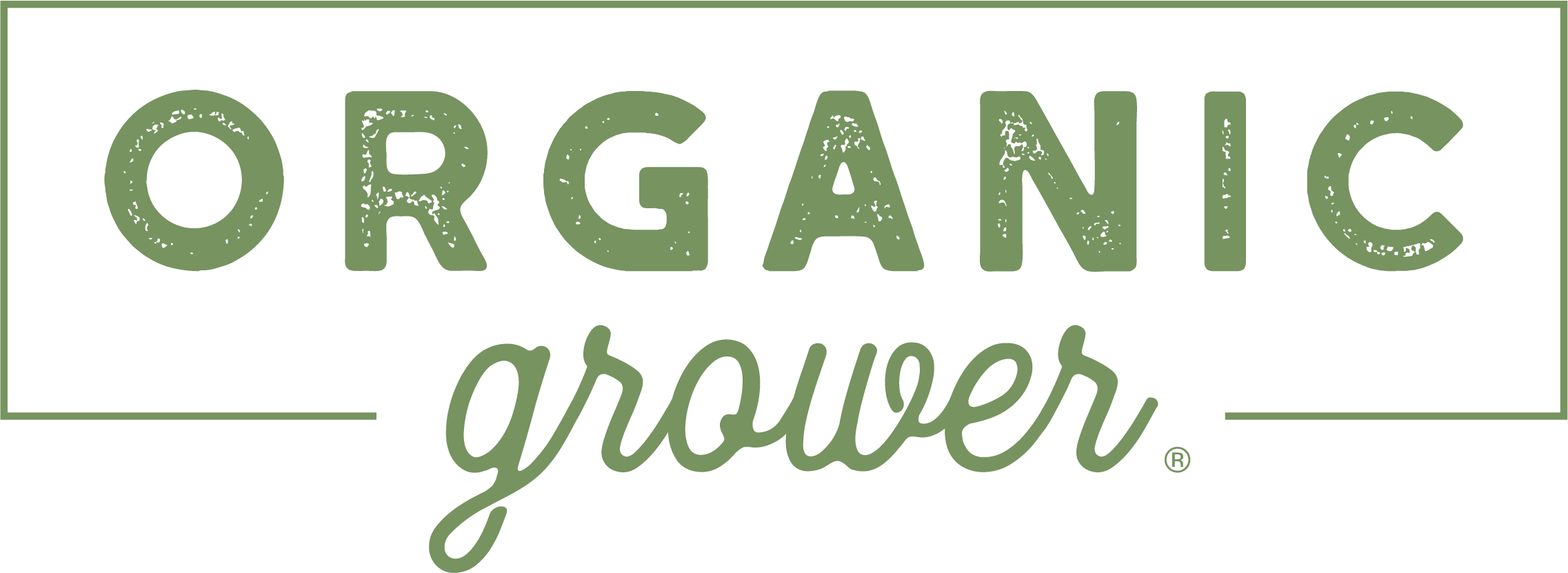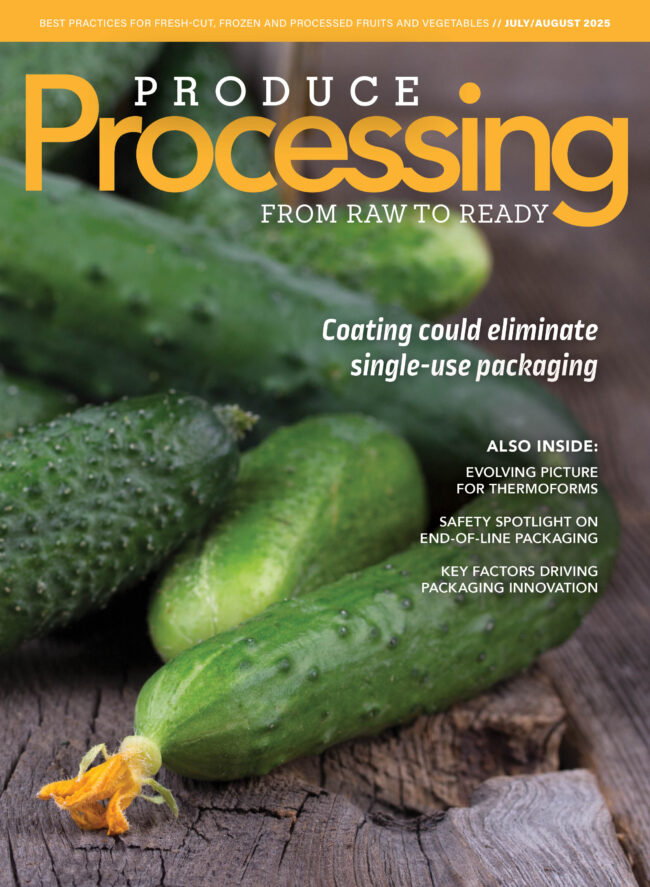HPP landscape evolving with customer preference
High-pressure processing is nothing new for the juice and beverage industry. But the focus of the long-trusted technology is evolving.
Fruit going through HHP these days has as good a chance of ending up in a dense, nutrition- packed beverage bomb such as a health shot as in a bottle of OJ.
“One of the areas that we are looking at that is starting to get more and more common is what we call targeted nutrition,” Errol Raghubeer, senior vice president of technology at machine industry company JBT Avure, told Produce Processing. “HPP does not affect nutrient compounds in foods. What we’ve seen companies doing is concentrating those nutrients to target certain population groups, like people with immuno-compromised diseases, to help them boost their immunity.”
The global functional drinks market increased by 10% from 2015 to 2020, according to a study by market research firm IMARC Group, with continued growth forecast for the following five years. Market intelligence agency Mintel identified a theme of interest in “food as medicine” in 2025, with functional beverages reaching a total of 1,975 market placements worldwide.
Health or wellness shots, which gained popularity during the COVID-19 pandemic, are small juice drinks with a blend of extracts, herbs and spices in a variety of flavors such as pineapple and orange. Manufacturers claim the diminutive drinks can boost energy and immune systems and help fight aging, with ingredients such as ginger to ease nausea and bloating, turmeric to reduce inflammation and apple cider vinegar to help manage blood sugar levels.
“They are more concentrated in the nutrients that they have, instead of just apple juice or orange juice inside of it,” Raghubeer said.

PRESERVING THE GOOD STUFF
Preserving nutrients is a key component of high- pressure processing, a technique that immerses fresh products in a cold-water bath and applies uniform pressure of 87,000 pounds per square inch — equal to six times that found at the deepest part of the ocean. The process is effective at killing food-borne pathogens with the added benefit of preserving the nutritional value, appearance and taste of food — attributes that heat can adversely affect.
An early adapter of the technology in the fruit and vegetable industry was the avocado, which boasts a high water content and a solid composition that can hold its structure during the pressurization process. HPP, also used for products including hummus, is not as suited for fruits with air pockets that make them more susceptible to collapse, such as strawberries or raspberries.
Nonetheless, Keenan Drenning, director of HPP – Americas for high-pressure technology company Quintas, believes there’s room for more fruit in the HPP universe.
“I’d like to see more fresh produce in terms of fruits, specifically, packed in their own juices,” Drenning said. “It reduces the need for syrups or any kind of chemical additives so that you can have basically fresh fruits that have weeks’ worth of shelf life.”
More widespread adaptation of HPP for fruits may be slowed by several factors, Drenning said.
“It’s maybe a combination of just the way that we’ve done it: People are more comfortable buying a fresh pineapple and cutting it up themselves,” he said. “Or the turnover of that product is fast enough that they don’t feel that they need the extended shelf life in the refrigerated sections.”
Like Raghubeer, Drenning is seeing an increased interest in nutritional-focused markets, especially in the U.S.
“There’s increasing awareness of health foods and just trying to eliminate chemicals in our food, to get closer to natural products with less processing,” Drenning said. “HPP helps do that. The word processing is in the product description, but it is minimally processed and maintains the original nutritional value of the product, unlike many other forms of processing.”
SAFETY FIRST
HPP also can extend product shelf life and bolster food safety, as its final pathogen inactivation occurs during the last stage of packaging. Once sealed, there are no more entry points for harmful bacteria such as Listeria monocytogenes, which made headlines during a 2024 outbreak traced to liverwurst produced at a Boar’s Head plant in Virginia.
Listeria is also a concern in produce processing. On Dec. 27, 2024, Braga Fresh voluntarily recalled ready-to-eat broccoli sold at Walmart stores in 20 states because of listeria concerns, while the bacteria also prompted a recall of butternut squash in Ontario, Canada, in 2023.
“Listeria is growing, and the reason it’s growing is not that you have better methods of diagnosis or you’re following up on these outbreaks,” Raghubeer said. “It’s because fresh foods or ready-to-eat foods are increasing in the market.”

Companies searching for safer ready-to-eat processes such as cooking, fermentation or drying — known as the lethality step — can find that HPP adds an effective post- lethality (meaning applied to the final product or sealed package) treatment.
“People are becoming more aware now that you need post-lethality treatment of your product,” Raghubeer said. “Every time you have an issue with food safety recall, the phone never stops ringing because of people starting to look at, ‘What can HPP do for us, because we can’t use heat?’
“The technology continues to grow, but it needs to start looking at different areas of application rather than the avocado, the juices and ready-to-eat meats.”
PACKAGING STICKING POINT
The cost outlay to purchase an HPP machine — which can top $3 million — can be partially offset by tolling centers, which provide pay-per-use levels of HPP service to companies without in-house equipment. The technology, however, does face a fundamental conundrum: While products that use it retain more natural nutrients and flavors, they require packaging flexible enough to withstand compression, elastic enough to regain its shape and waterproof to withstand submersion.
That translates to plastic, specifically polyethylene terephthalate (PET), a clear, durable medium that is the most recycled plastic in the U.S., according to americanbeverage.org. With growing environmental concern and increasing regulations attached to that material, HPP companies are casting about for alternatives.
“HPP is traditionally thought of, especially on the juice side, as a higher-end product,” Drenning said. “The cold- pressed juices are not the cheapest option that’s out there. It’s because they’re better for you and it’s more direct from the farm or the orchard. That customer profile also wants to be more sustainable if they can.”
Drenning has been keeping tabs on plant-based PET advances, while Raghubeer has had discussions with companies such as BASF and DuPont about biodegradable packaging film produced with polylactic acid (PLA), a bioplastic made from corn or sugarcane. But in addition to being expensive, PLA has not proven to have a good oxygen barrier, Raghubeer said — essential in HPP to prevent chemical reactions and product degradation.
“Packaging is always a challenge,” he said. “You’re talking about all the natural things, but you still depend on plastic material.”

MEETING DEMAND
Despite its challenges, HPP continues to grow and find uses in additional industries, including fresh pet food, pharmaceuticals and cosmetics.
Quintus is prepared to help customers meet increased demand with what it touts as the highest-capacity HPP machine on the market. The QIF 600L, unveiled in 2024, boasts a 600-liter cycle capacity that elevates production capacity while reducing labor and energy costs.
“The main customers there are going to be your toll producers, and then very large-volume customers,” Drenning said. “We start at a 150-liter press. Within each of those products, we also have a base-level model with a fewer number of pressure intensifiers. A lower volume customer could buy in on any one of those models, at the lowest number of intensifiers, and then later, as you grow, you can add a group of intensifiers — what we call a power cell — and increase your capacity.”
JBT Avure’s HPP solutions include the AV-X, marketed as the world’s first expandable HPP machine and upgradable from AV-40X to 70X, and its Tilt Basket unload station.
Raghubeer has worked with HPP since the 1980s, when he helped the U.S. Army study the technology’s suitability for use in MREs. While that did not prove feasible, HPP showed the most promise among novel technologies studied, including false electric field, ultraviolet and microwave radiation, for increasing food safety, quality and shelf life.
“There’s a tremendous benefit to manufacturers to use HPP for food safety, and for the consumer, you’re getting products without the chemicals inside,” he said. “At the end of the day, it’s what costs less and (prevents) recalls. You can protect your brand and at the same time give the customers what they want.”










